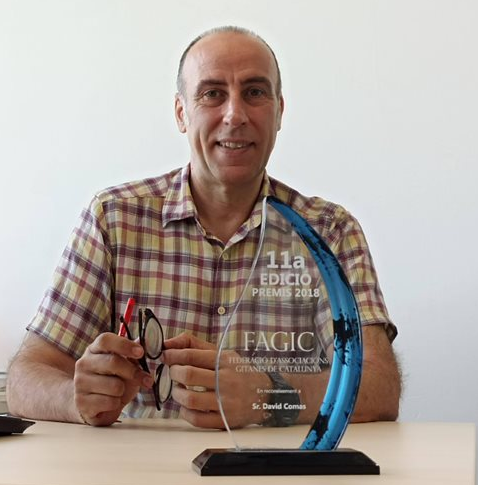What characteristics should a person have to identify with an ethnic group? Their ancestors? Their genetics? Their traditions? Or perhaps, all of the above? These are questions that open up a social and philosophical debate about how we determine and define our identity.
It might seem easy to define our identity by our skin colour, our facial features, and our mother tongue. But when including factors like migration, interculturality, and globalization, among others, the interpretation of an ethnic group becomes as subjective as it is deceptive.
The largest European minority
A clear example of this controversial definition of an ethnic group is the Romani people. Whether they call themselves Roma, Romanies, or Gypsies, this population that migrated from northern India to Europe over 1,500 years ago is considered the largest ethnic minority on the continent. Currently, they have a demographic representation of between 10 and 15 million people spread across various European countries; the equivalent to the population of Portugal or Belgium.
David Comas, a professor at the Department of Medicine and Life Sciences, Pompeu Fabra University (MELIS-UPF), has been researching the genetics of the Romani people for over a decade and continues to do so in collaboration with other researchers from the Institute of Evolutionary Biology (IBE: CSIC-UPF), a joint center between Pompeu Fabra University (UPF) and the Spanish National Research Council (CSIC) where he works. During their research, the scientist and his team have conducted the most extensive collection of genetic data from the Romani population to date, thanks to a collaborative effort with the “Federació d’Associacions Gitanes de Catalunya (FAGiC)” and information obtained from previous studies.
The Romani people are the largest ethnic minority in Europe, with 10-15 million people, and a population with great genetic diversity.
“The Romani people are particularly interesting group within Europe because it has experienced diverse demographic processes, unlike the rest of the European populations, which are genetically very homogeneous and share a similar history”, explains the researcher. Furthermore, Comas adds that this population, beyond arousing interest and curiosity, requires a historical reconstruction because it is an ethnic group that has been stigmatized; very little has been researched about their culture, and they have been made invisible for various reasons, despite being the largest ethnic minority in Europe.
The Path of the Romani People: A highly collaborative project
Comas presented the results of his decade long research last May at the UPF facilities, in an event titled “The Path of the Romani People: A History of Diversity.” According to the scientist, the reaction of the Romani guests at the MELIS event regarding the results of this research was not so much gratitude, but rather a sense of tranquility. “The tranquility of being recognized, made visible, and having the certainty that what the Romani people already thought about their heritage is confirmed”, says Comas.
Since the beginning of the collaboration with FAGiC, members of the Romani community have been co-authors of the project, actively participating in data collection, data interpretation, and even proposing new research questions. During the research, David Comas and his team presented the results to them, and the Romani collaborators confirmed whether the hypotheses aligned with their ancestral heritage. Thus, the involvement of the Romani people and their feedback allowed for the confirmation of the scientific knowledge obtained. “This close collaboration also enabled us to explore some of the concerns of the community itself,” says the scientist. Perhaps due to all this, Comas’ work was awarded at the 11th edition of the FAGiC awards.

Romani diversity and identity
Due to their history, the Romani community is genetically diverse, and Romani groups established in different locations are highly varied. So, how do we know if a person belongs to the Romani people or not? “In our studies, we took into account the individual’s self-identification. If the individual stated that they were Romani, we considered them as Romani,” explains Comas. “In the end, genetics is only a part, I would say a small one, that helps to understand the identity of a population group,” argues the coordinator of this study. “But an ethnic group is defined by other characteristics beyond genetics: linguistic, cultural, social factors, etc.”
“My grandmother always used to tell me: if that person says they are a Gypsy, they are a Gypsy.”
Participant at the UPF event
One of the research projects conducted during these years involved using genetics to estimate the admixture in the Romani population of the Iberian Peninsula. With the voluntary participation of around 200 Romani individuals, DNA tests were conducted using saliva samples. Among the results, it was found that the mitochondrial DNA (passed down through the maternal line) in the Romani population shows a higher frequency of non-Romani European lineages compared to the Y chromosome (passed down through the paternal line). In other words, non-Romani women integrated more into the Romani population than non-Romani men. They also found, to a lesser extent, Romani lineages in the non-Romani European population.
“This and other studies are just a first approach to understand Romani identity, because there are still many Romani groups that have not been studied, such as the Sinti, of whom we do not know their genetic profile,” argues Comas. The Sinti or Sinta are a group of European Romani, mainly from France, Italy, and Scandinavia, who currently form a reduced population on the continent due to various situations, including their persecution during World War II. Similarly, there are Romani groups in the Americas that have not been studied yet. In fact, in Latin America, it is estimated that Brazil has the largest number of Roma, followed by Argentina and Chile. One of the purposes of the project led by Comas is to study these populations outside of Europe.







